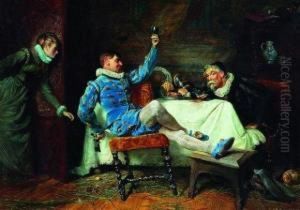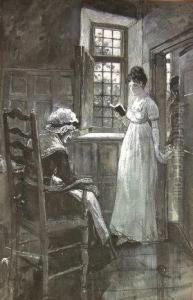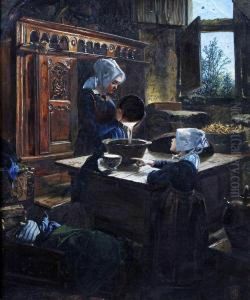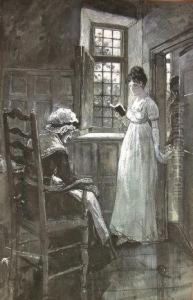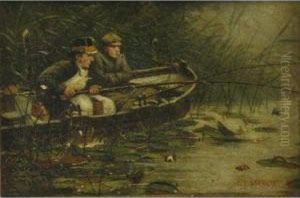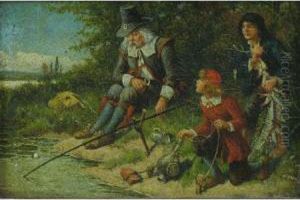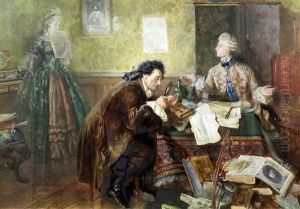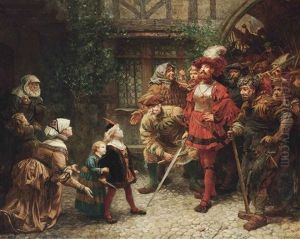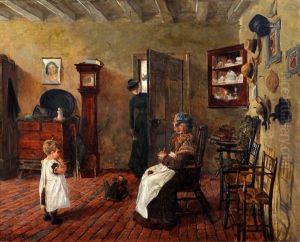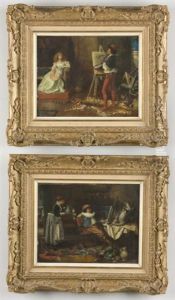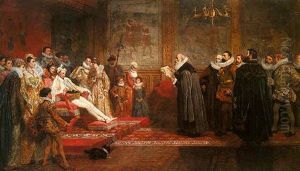Charles Joseph Staniland Paintings
Charles Joseph Staniland, born in 1838, was a distinguished British painter and illustrator, renowned for his historical and genre scenes. His work is celebrated for its meticulous detail, vibrant storytelling, and the ability to capture the essence of Victorian life and narratives. Growing up during the reign of Queen Victoria, Staniland was deeply influenced by the cultural and social dynamics of his time, which is vividly reflected in his art.
Staniland received his formal education at the Royal Academy Schools, a prestigious institution that nurtured his burgeoning talent and shaped his artistic direction. His education and early exposure to the art world played a crucial role in developing his distinctive style, which combined technical precision with a keen observational eye. Throughout his career, Staniland exhibited at the Royal Academy and other significant venues, earning accolades for his work's emotional depth and historical accuracy.
Notably, Staniland also made significant contributions as an illustrator, working for various periodicals of his time, including the illustrious Illustrated London News. His illustrations brought to life the literature and events of the era, captivating a broad audience with their realism and charm. This work complemented his paintings, allowing him to reach a wider audience and solidify his reputation as a versatile and skilled artist.
Staniland's oeuvre is a valuable window into Victorian society, offering insights into the historical events, daily life, and the imperial sentiment of the time. His paintings and illustrations not only served as entertainment but also as a form of documentation of an era that was rapidly changing under the influences of industrialization, scientific progress, and global expansion.
Charles Joseph Staniland passed away in 1916, leaving behind a legacy that continues to be appreciated by art historians, collectors, and enthusiasts. His work remains a testament to the skill and dedication of Victorian artists in capturing the spirit of their age, making him a significant figure in the annals of British art history.
